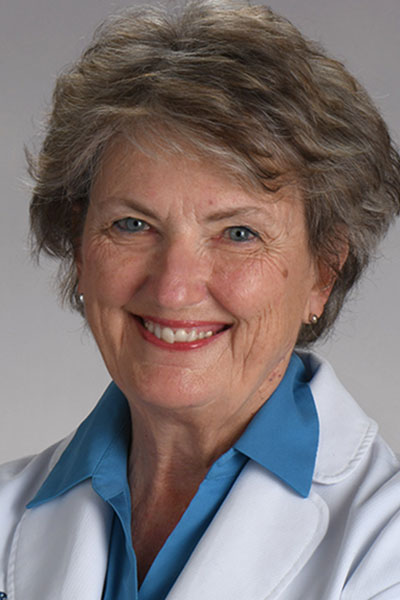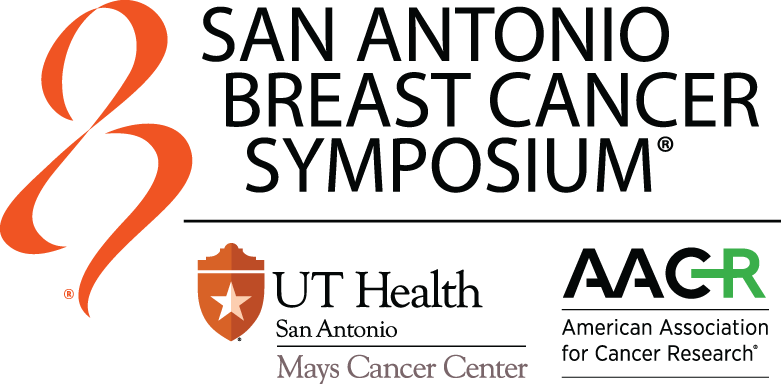
From understanding breast cancer risk to managing vasomotor symptoms in high-risk women to focusing in on exogenous hormone use in BRCA mutation carriers, Special Session 2: Prevention, Early Detection, and Interception covered a broad range of clinical and scientific issues. The session was held on Wednesday, December 6, at the 2023 SABCS® and is available on demand for registered Symposium participants through March 31, 2024, on the meeting platform.
Exploring the polygenic score

Suzette Delaloge, MD, MSc, Director of the Cancer Interception Program at Gustave Roussy in Villejuif, France, answered the question: What is a polygenic risk score, and how is it used in breast cancer?
A single nucleotide polymorphism (SNP) is a variation of a single DNA base pair in the DNA . Although the relative impact of one SNP is small, the combined effect of multiple risk variants as captured by polygenic scores may be much greater. “Therefore, they may provide risk discrimination that is clinically useful,” Dr. Delaloge said. “Breast cancer polygenic scores (PGS) are among the most promising regarding potential clinical utility.”
The key to achieving that potential is to incorporate the clinical scores that are used for risk assessment into clinical decision-making, Dr. Delaloge said.
“Polygenic scores have a high level of demonstration regarding their analytical and clinical validity for breast cancer risk prediction,” she said. “Definitive demonstration of their clinical utility regarding stratified screening in the general population is ongoing.”
PGS are better used as part of multimodal scores including clinical factors and images analyses using artificial intelligence, Dr. Delaloge said, and they may help refine cancer risk assessment in gene carriers of moderate risk.
Routine PGS implementation in the general population would be an important paradigm shift toward a 2.0 cancer prevention approach, Dr. Delaloge said, noting that the major remaining gaps are related to their only partial transferability across ethnicities, and the risk of inequitable access.
Several prospective randomized controlled trials are now being conducted with the hope of demonstrating the utility of risk-based screening, including Dr. Delaloge’s own MyPeBS trial. In this trial, women ages 40 to 70 with no history of breast cancer or known risk factors are randomized to receive either standard screening according to current recommendations or the 313SNP-based risk assessment followed by stratified mammography schedules. MyPeBS has accrued more than 53,000 participants from six countries.
Vasomotor symptoms, hormone therapy, and breast cancer risk

Session moderator Carol Fabian, MD, Director of the Breast Cancer Prevention Research Center at the University of Kansas Medical Center, discussed hormone replacement and alternatives for relief of vasomotor symptoms in women at increased risk for breast cancer. She noted that vasomotor symptoms affect 70% of women during menopause transition and early menopause and that symptoms can last for up to a decade.
Dr. Fabian also summarized what is known about how hormone replacement therapy (HRT) affects the risk of breast cancer. Regarding estrogen alone, neither estradiol nor conjugated equine estrogen (CEE) taken for five years or less is associated with a long-term significant increase in breast cancer among people with up to moderate risk.
“However, there is persistent excess risk with estrogen plus progestin as shown in both RCTs and observational studies,” Dr. Fabian said.
Dr. Fabian posed a hypothetical case study. “What would you do if a patient had a family history of breast cancer, moderate to severe vasomotor symptoms, and an intact uterus. Gabapentin and SNRI gave her some relief at first but no longer. She wants hormones but does not want to increase her breast cancer risk. What are her options?”
Dr. Fabian suggested adding bazedoxifene (20 mg) to CEE (0.45 mg) instead of progestin to relieve hot flashes with no increase in breast cancer risk.
Bazedoxifene is anti-estrogenic in the breast and uterus, and the combination shows no increase in endometrial hyperplasia or bleeding, she said.
“The FDA has approved this combination for the relief of hot flashes and preventing osteoporosis and fracture, and we’re studying it as a possible chemoprevention agent,” Dr. Fabian said.
She described her ongoing phase IIB trial of bazedoxifene plus conjugated estrogens. It uses pre-randomization baseline levels of insulin, glucose, and other parameters, with the levels measured again after six months of the combined regimen in the active arm. At that point, participants in the active arm go off study and the patients in the control arm can then choose six months of the study regimen.
Dr. Fabian noted that among women at substantial increased risk but no contraindications, those without uteruses could be treated either without hormones, with estrogen alone, or with the bazedoxifene/CEE regimen. Women at high risk and still have their uteruses could eliminate the estrogen option and choose either nonhormonal options or the bazedoxifene/CEE regimen. For women with prior breast cancer or other contraindications, nonhormonal therapies remain the safest choice, she said.
Hormone use in BRCA mutation carriers

Joanne Kotsopoulos, PhD, Professor, of the University of Toronto, examined the use of hormones in patients with BRCA 1 and 2 mutations, ranging from tamoxifen to HRT after oophorectomy.
Tamoxifen remains the only nonsurgical prevention option, but earlier studies were based on postmenopausal women or mutation carriers with contralateral breast cancer, Dr. Kotsopoulos said.
Dr. Kotsopoulos said there was no statistically significant association with risk reduction. But she did not rule out that the level of risk reduction with two or more years of use is similar to what is seen in clinical trials.
“And despite having our first prospective study featuring a matched analysis, tamoxifen adherence, uptake, and prescribing remains low,” she said.
Additionally, other medications may play a role in chemoprevention, including aspirin, statins and metformin. Low-dose tamoxifen and anastrozole also show promise, as does the RANK ligand inhibitor denosumab in BRCA1 mutation carriers, she said.
When considering oral contraceptives and BRCA cancer-related risks, clinicians must balance between a reduction in ovarian cancer risk and an increase in breast cancer risk, Dr. Kotsopoulos said. “We know in the general population there is a transient increase in risk of breast cancer with use of oral contraceptives, but this tends to go away after stopping use. But the evidence for mutation carriers is unclear.”
Another important question in this space is what the true risks and benefits of risk-reducing bilateral oophorectomy are, Dr. Kotsopoulos said. She described findings from her prospective cohort study (manuscript in press) that followed women from age 35 to death or age 75.
“With a 64 percent reduction in all-cause and site-specific mortality, we saw a profound impact on death rates,” she said. “Our study has the limitation of participants who were too young to estimate risk on noncancer deaths, but it’s clear we need to mitigate the adverse impact of early surgical menopause.”
Regarding HRT after oophorectomy, Dr. Kotsopoulos recommended a tailored approach to menopause management that balances patients’ cancer history and mastectomy and hysterectomy status. She also encouraged colleagues to explore newer formulations such as micronized progesterone and the conjugated estrogen/bazedoxifene combination.

